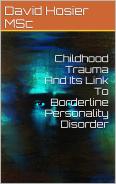Tags
Childhood Trauma: What Experiments on Causes of Aggression in Rats Tell Us.
A recent Swiss study has looked at the effects of trauma on ‘adolescent’ rats. It was found that those rats who were exposed to trauma (fear and stress inducing stimuli) suffered adverse PHYSICAL EFFECTS ON THE BRAIN (specifically, the PRE-FRONTAL CORTEX). This, in turn, leads to them displaying significantly more aggressive behaviour than non-traumatized rats.
A very similar effect has been found to occur in young rats SEPARATED FROM THEIR MOTHERS.
Furthermore, ‘adolescent’ rats exposed to trauma also develop ANXIETY and DEPRESSION type behaviours. They were found to also have increased activity in the brain region known as the AMYGDALA (which is linked to FEAR and VIOLENCE in humans). Additionally, they developed abnormally high levels of TESTOSTERONE ( a hormone which, in humans, is linked to AGGRESSION and VIOLENCE). Even the rats’ DNA was found to be affected by the trauma (specifically, MAOA genes). These genes act to break down SEROTONIN (a brain chemical, or neurotransmitter) and damage to it leads to too much serotonin being broken down which, in turn, leads to aggressive behaviour.
However, ADULT RATS exposed to trauma did not undergo the same behavioural changes, so:
THE RESEARCH SUGGESTS IT IS TRAUMA IN EARLY LIFE, RATHER THAN IN ADULTHOOD, WHICH HAS ESPECIALLY DEEP EFFECTS ON THE CHEMISTRY AND PHYSICAL STRUCTURE OF THE BRAIN, THAT LEADS TO A PROPENSITY FOR AGGRESSIVE BEHAVIOUR.
CONCLUSION:
To what degree can we apply these findings to the effects of childhood trauma in HUMANS?
In fact, the findings I’ve outlined above mirror very accurately findings from studies on humans; this suggests that similar physiological processes are going on in both rats and humans as a result of early trauma.
Studies on non-human primates have also given rise to very similar findings.
It is hoped that such research showing that physiological effects of early trauma seem to underlie a development of a greater propensity towards violence and aggression will help lead to drugs being developed that can reverse these physiological effects and therefore reduce levels of aggression in individuals affected by early trauma. With this aim in mind, further human and non-human studies are being conducted.
The above post is based on a study by Marquez et al (2013).
I hope you have found this post interesting. Please sign up to ‘FOLLOW’ this blog if you would like to. At least two new posts are added each week. Alternatively, you can be alerted to new posts via TWITTER.
Best wishes, David Hosier BSc Hons; MSc; PGDE(FAHE).




